New Scott Foil goes 20% faster, loses weight and builds extra comfort - plus a rear light - into its aero seatpost
We've never seen a WorldTour bike with an integrated light - is this a world first?
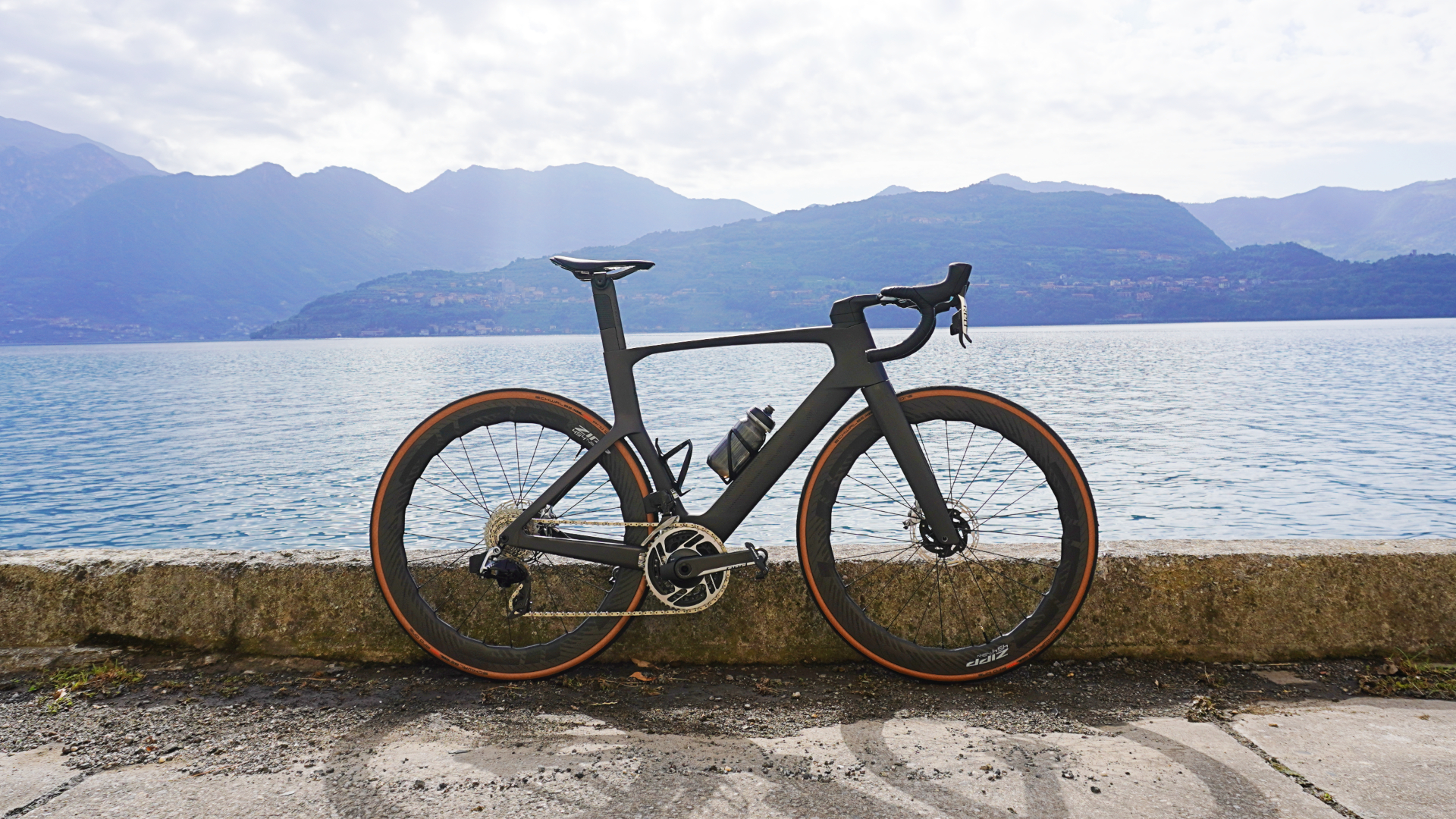

Swiss brand Scott has just released the latest iteration of the Foil, its speed focused raced machine.
When we had the previous model - the £8,000 Scott Foil Premium - on test, we were highly impressed by the sheer speed when pacing along the flat - but it certainly wasn’t the lightest or most comfortable aero bike out there.
In this update to the WorldTour pro bike ridden by Team DSM, Scott has worked hard to develop the Foil in both of those areas - whilst still doubling down on the aero performance. To throw out some numbers, Scott claims the new Foil is 20% faster, 10% more comfortable and 9% lighter - but there’s so much interesting tech behind these digits, so let’s jump straight into that.
Deeper tubes for aero gains
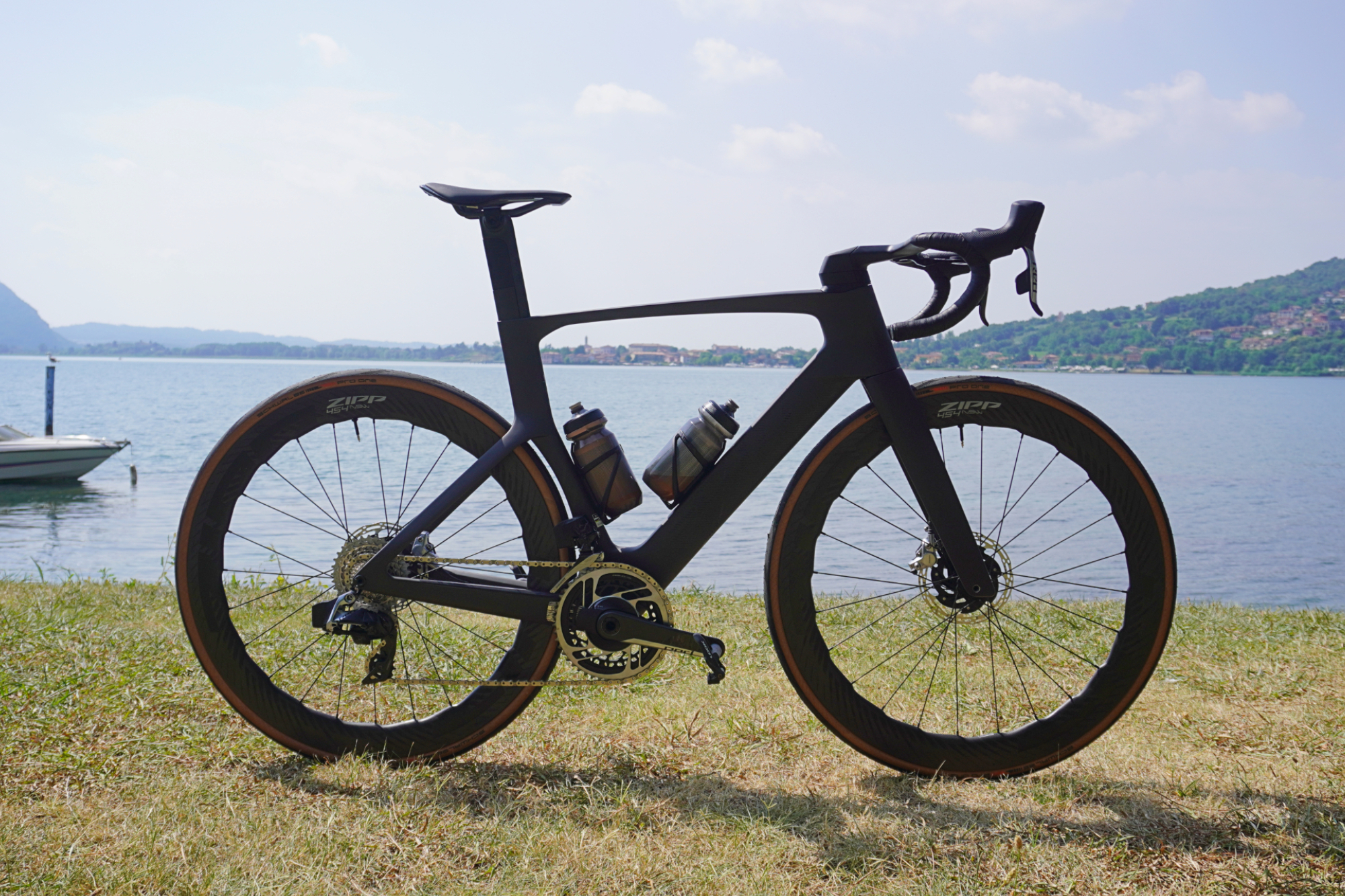
After the UCI updated its regulations on bike design in 2021, Scott took the opportunity to redevelop its aero road bike and take full advantage of what could now be done within these new limits.
Perhaps most immediately obvious is that many of the tubes have cross sections that are a little deeper than before, as well as the fork crown being a little higher up from the front wheel.
Up front, “the oversized head tube acts as a fairing,” Scott explains, “breaking the air and reducing aerodynamic drag as a rider powers forward.” But the bottom bracket area has also been beefed up, whilst the seat tube now follows the arc of the tyre much more closely - before the seatpost itself transitions to shoot straight upwards.
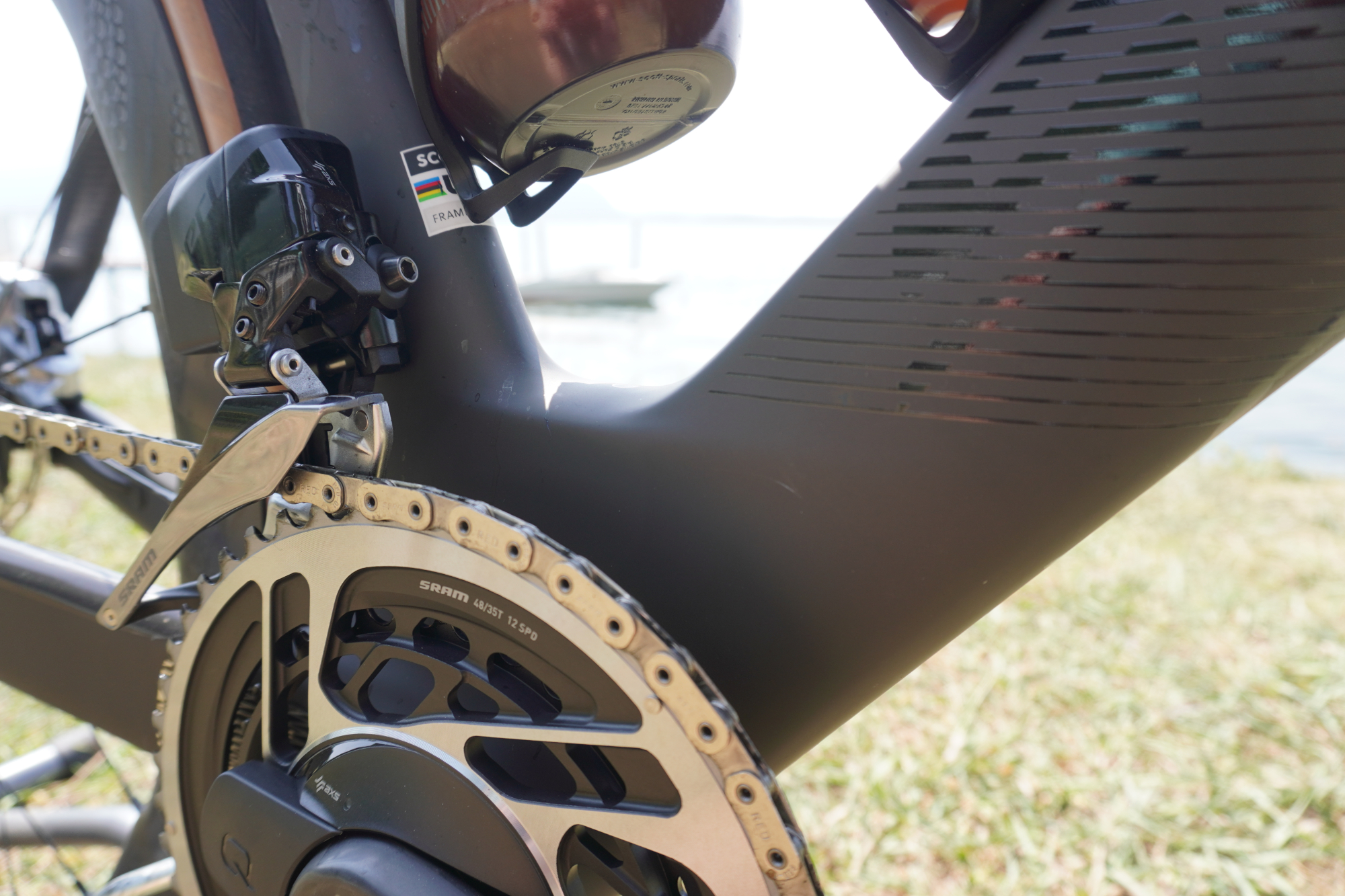
Other updates that are a little more subtle include the dropped seatstays, which have not only been designed to shelter the brake calipers to a greater extent, but they’ve also been “angled at 10 degrees to force [the laminar (steady) flow of] air into the [turbulent airflow of the] spinning spokes”.
Get The Leadout Newsletter
The latest race content, interviews, features, reviews and expert buying guides, direct to your inbox!
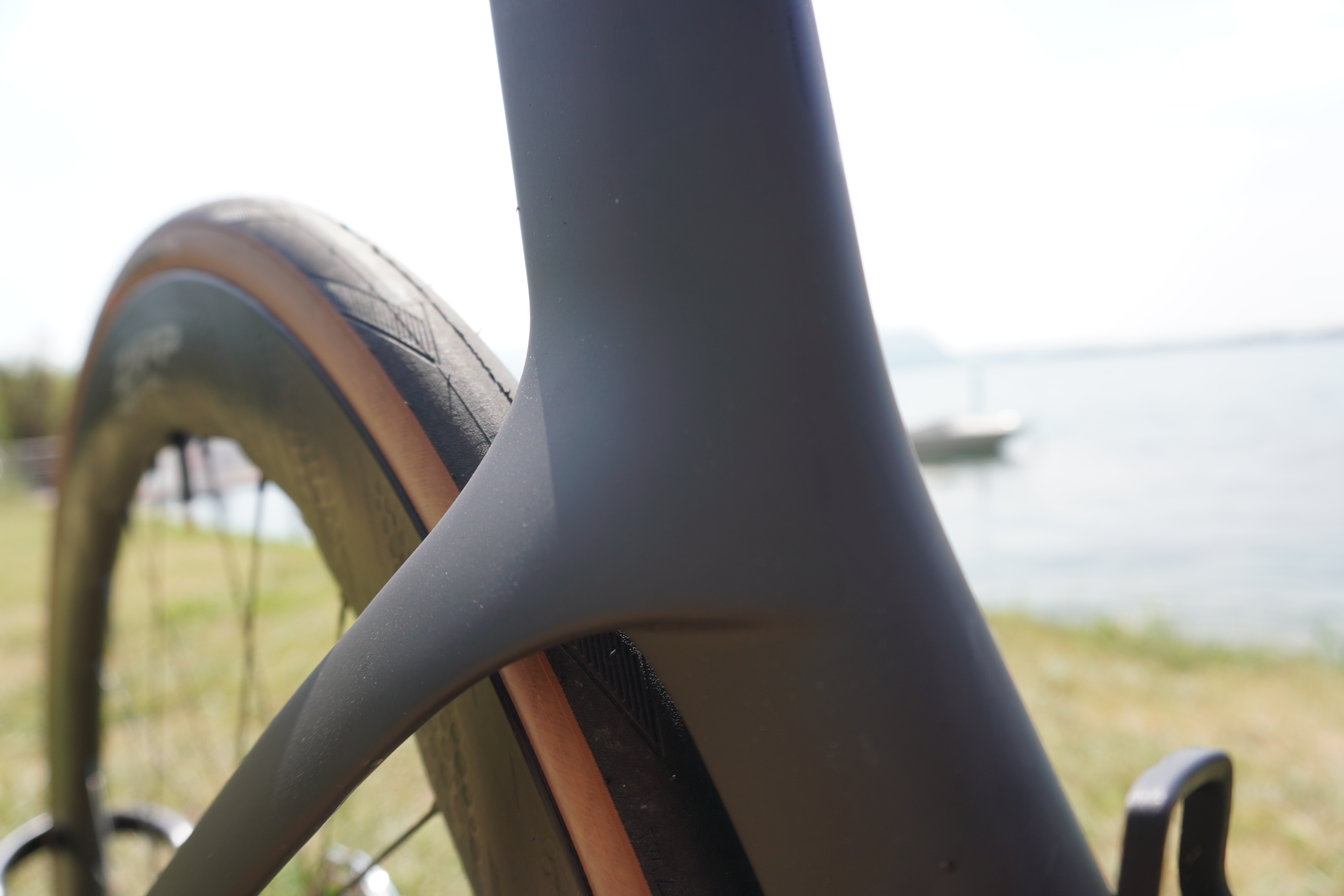
Conducting whole-system testing and the use of an actual wind tunnel, rather than only using CFD (computational fluid dynamics) software, was very important to Scott.
Through the prototyping phase, Scott actually found that some frame designs would return great results when tested without a rider, but would actually perform worse when part of a full rider-bike system.
The data Scott gives regarding the comparison between this iteration and the previous Scott Foil is that the new one is now 1 minute and 18 seconds faster over 40km at 40kph than before.
Another neat little point is that the bikes are being sold with 28mm tyres specced on the rear and 25mm tyres on the front.
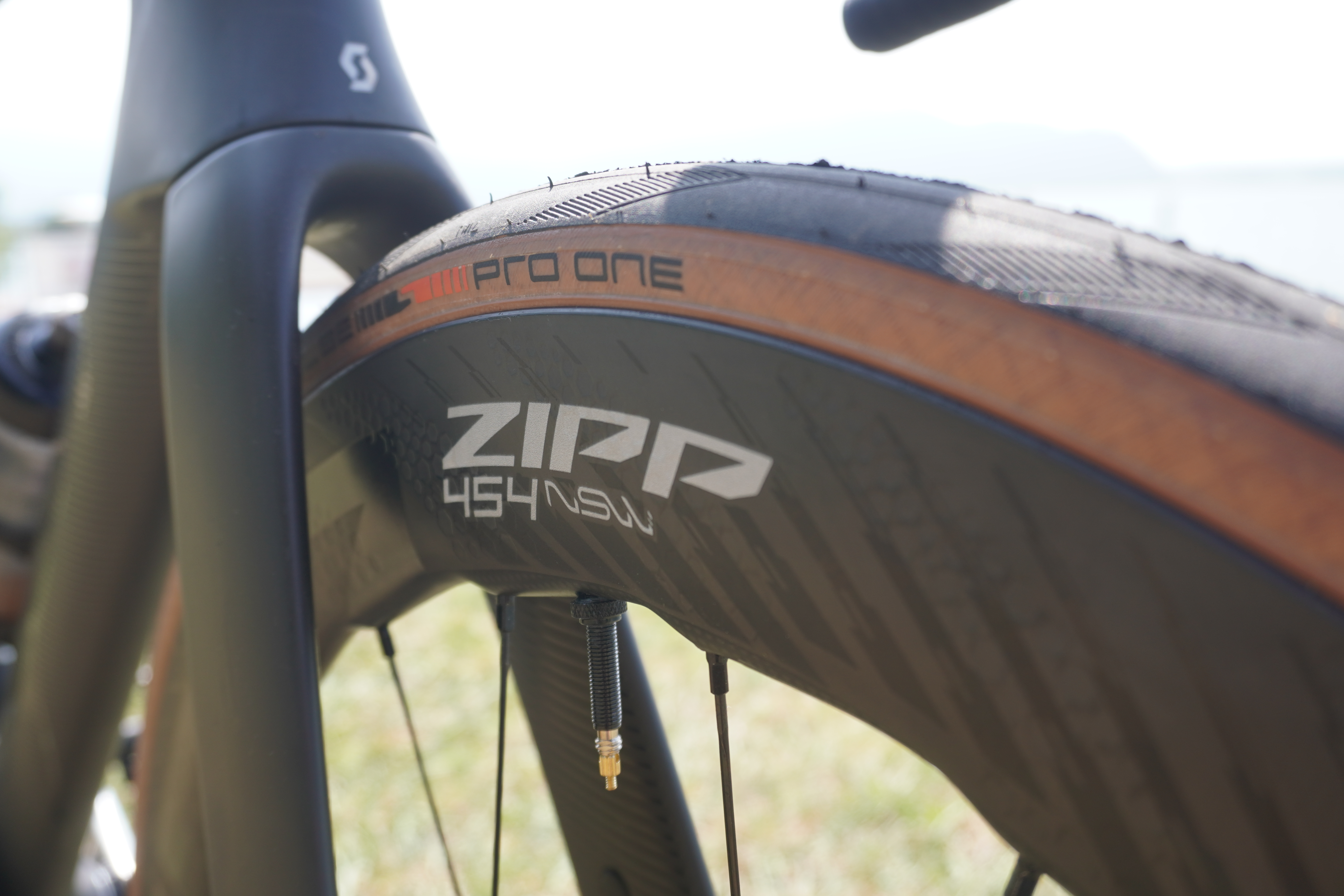
Now, it’s not only Scott’s testing that has shown this to be a rapid setup, we’ve seen others opting for the combination - optimising for aero on the front with a smaller leading edge and optimising for rolling resistance on the rear (surface dependant) with the wider tyres. With the airflow so turbulent already that far back, the width of the rear tyre has less of an impact.
Still, it’s pretty rare to see a mainstream brand present this as a stock option, so hats off to them.
Cutaway seatpost for comfort - and lighting
Although speccing 28mm tyres on the rear and having clearance for up to 30mm could be said to be something of a nod to smoother ride, Scott has done much more to try and improve the feel of the ride.
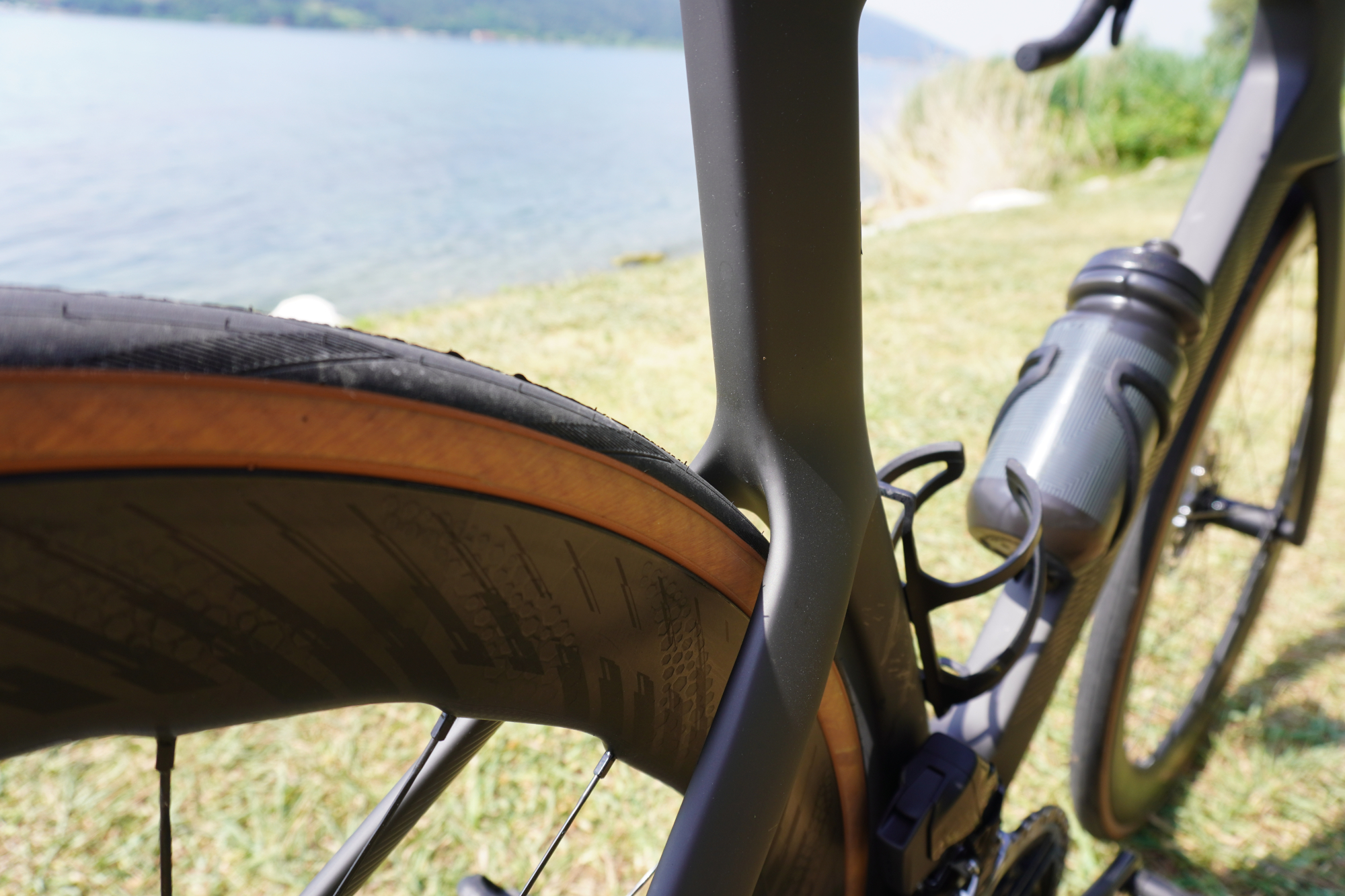
First is the seatpost. Although it might look like an unyielding, thick shaft of carbon, it actually hides a significant cutaway, which has been designed to allow the seatpost to flex to a much greater extent.
What’s more, instead of leaving this rear space empty, Scott has taken advantage of this space to neatly integrate a rear light into the seatpost, while maintaining the aerodynamic profile of the post.
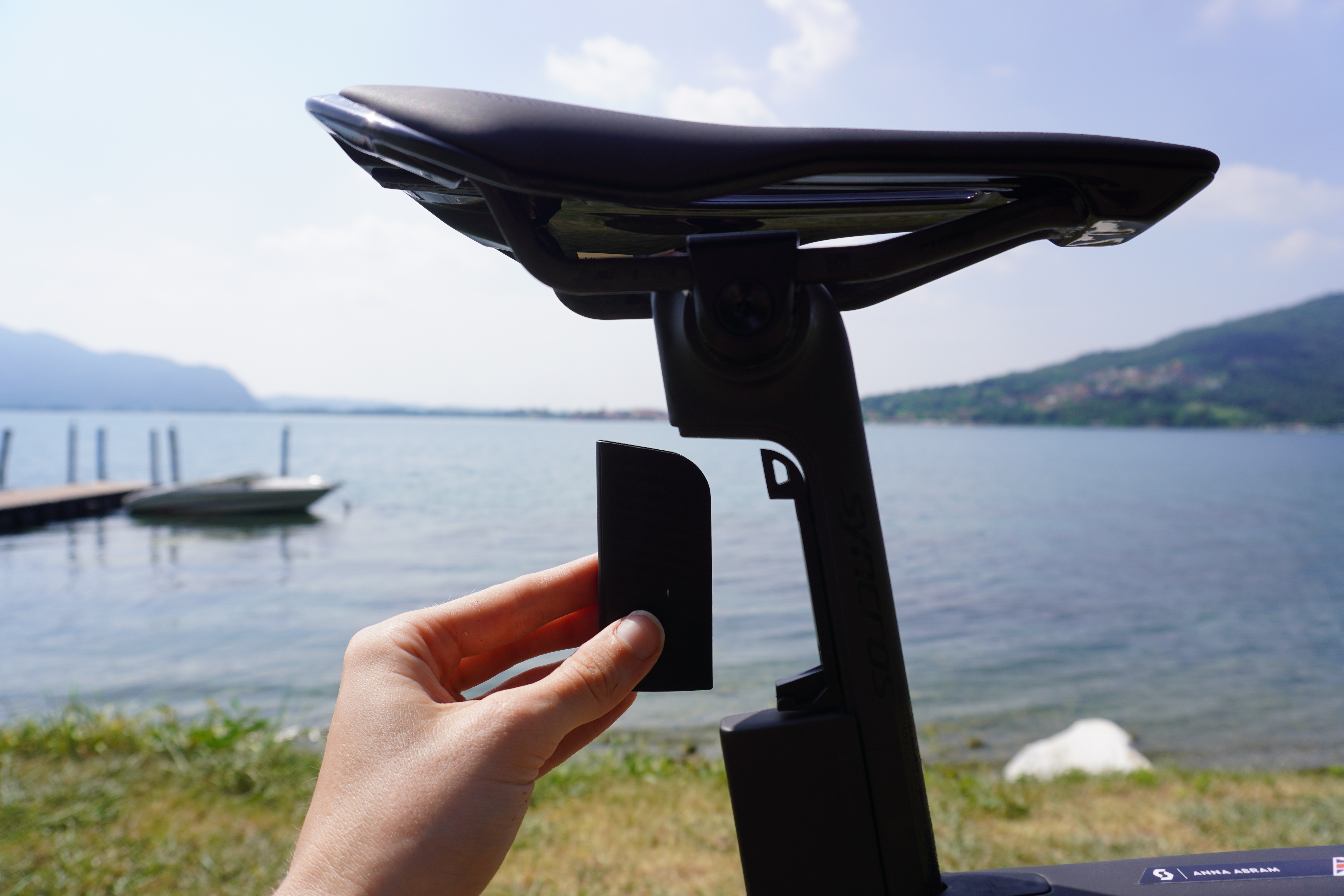
Of course, comfort isn’t only a good to pursue in and of itself, with Scott stressing: “Not only [will the seatpost] make sure that on rougher surfaces you aren’t beaten up, but more importantly, when on light gravel or cobbles, the seatpost will ensure you’re able to deliver maximum power through the pedals as you won’t be bucked out of the saddle.”
Upfront, the handlebars are an aero version of the Creston IC SL handlebars that Scott introduced to the Addict RC. But it’s not just the profile that’s been changed, Scott is introducing the concept of ‘adaptive compliance’.
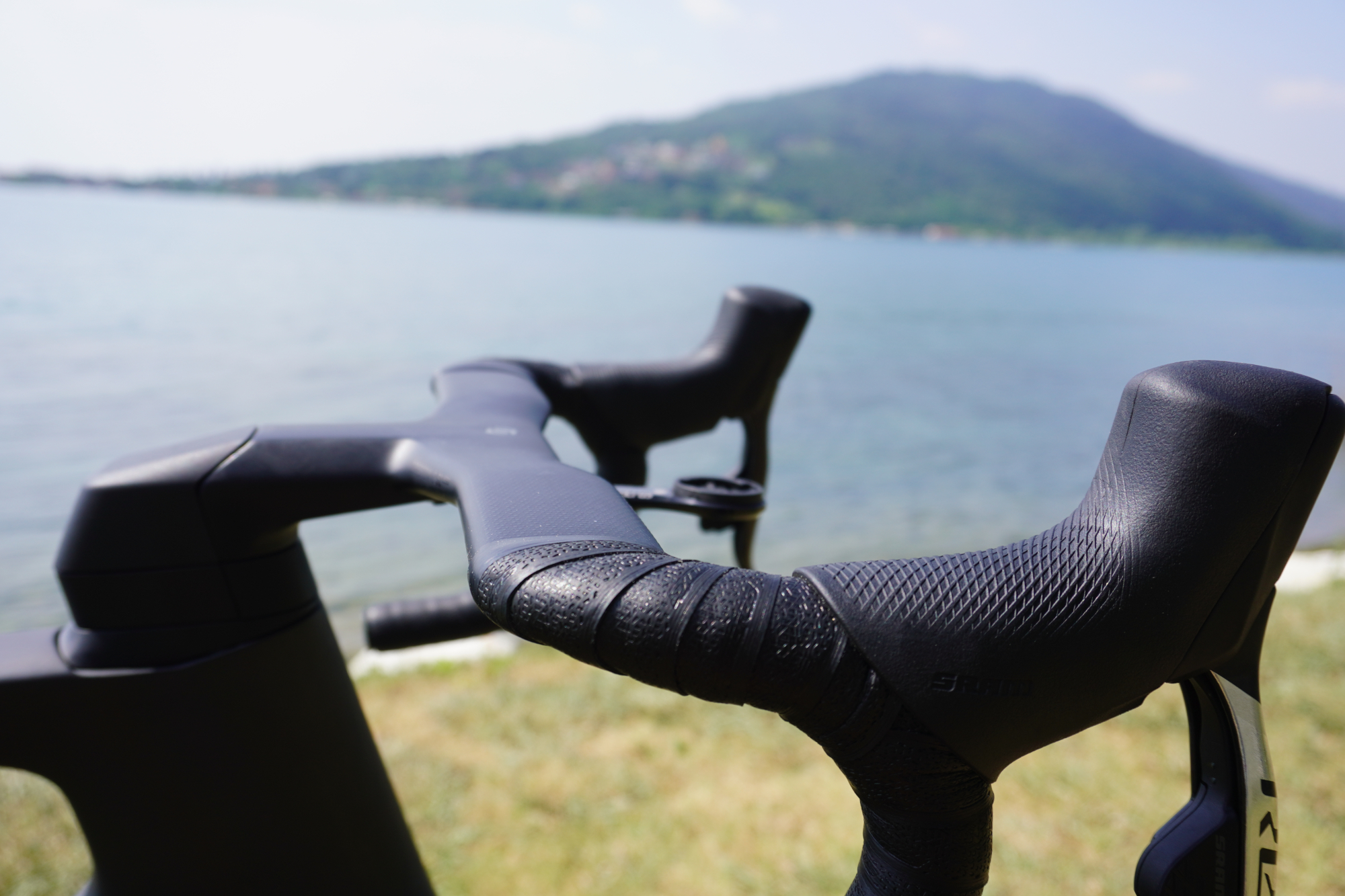
The idea is that the bars are able to sound out the road buzz of high frequency vibrations, but “when you sink into the drop to hammer the competition, the combo stiffens up to make sure you’re able to extract every watt possible”.
"Better carbon layup" for lower weight
Alongside the improved aero claims Scott has shed weight, with the RC Ultimate frameset weighing at a claimed 915g (size medium / 54cm). As aero bikes go, that is pretty good, although there are some lighter examples, such as Specialized’s Tarmac SL7 (claimed 800g, size 56cm) and Pinarello’s Dogma F (claimed 850g, size 53cm).
According to Scott, this has been achieved thanks to “a better carbon lay-up, a reduction in the number of carbon pieces and joints, and with incredible attention to the smaller details such as seatstays and seat clamp.”
Indeed, there are 30% fewer joins (now down to five) than the previous model, with the frame consisting of four separate parts. But it’s not just the frameset that has been put on a diet, the handlebars have also dropped a few grams as well.
The Foil RC Ultimate with a SRAM Red eTap AXS groupset and Zipp 454 NSW wheels comes with a claimed weight of 7.22kg. For comparison, the Scott Foil Premium with the previous generation of Shimano Dura-Ace and Syncros Capital 1.0 50 disc wheels that we had on test back in 2020 weighed in at 7.48kg in a size 56cm.
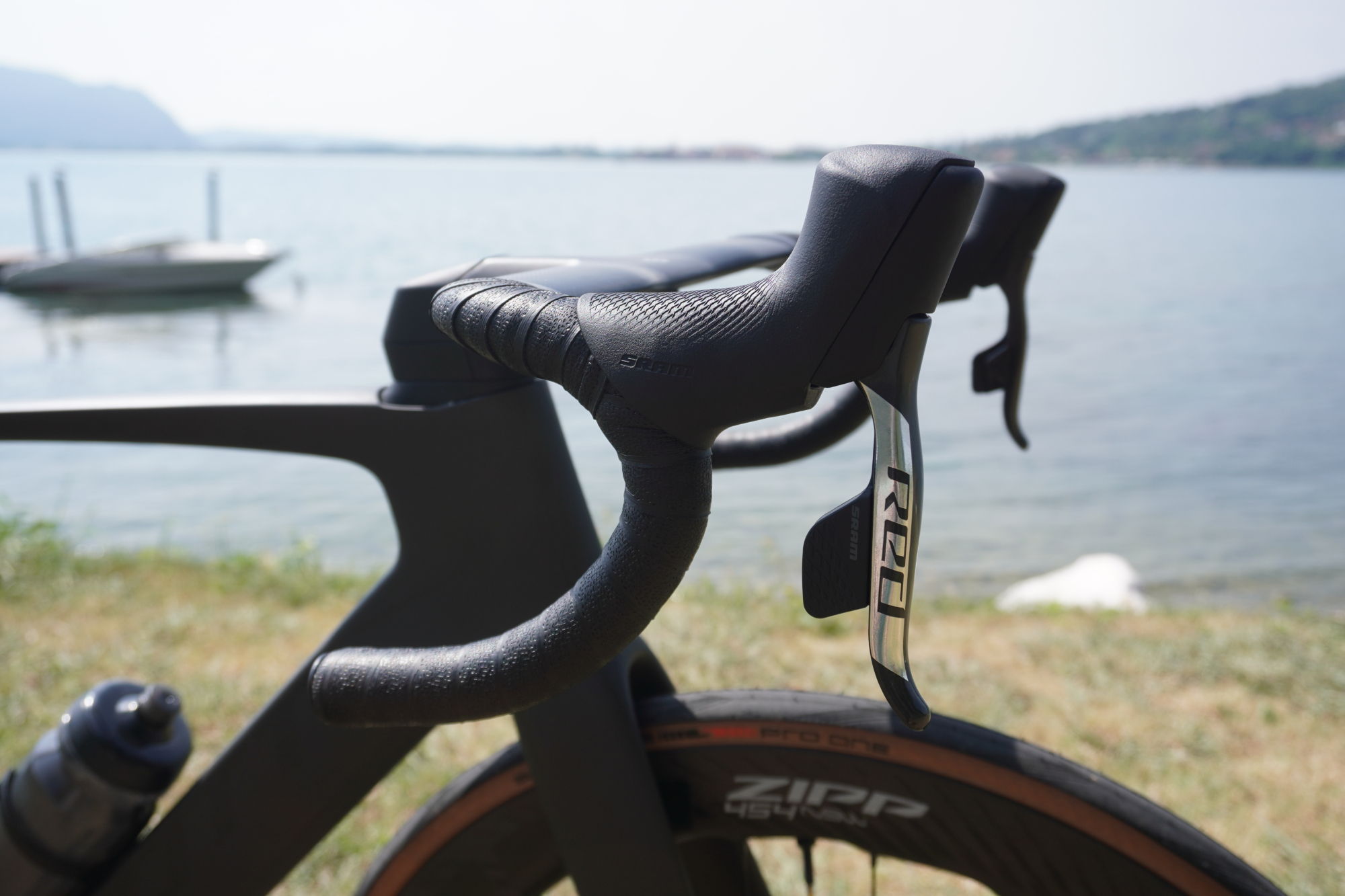
Geometry
In terms of the geometry, the Foil Ultimate RC isn’t at the razor sharp end of the very most aggressive aero bikes, although it’s still very much in the same ballpark. In a size 54cm with a stack of 548mm, it is a tiny bit higher than models such as Giant’s Propel and Cervelo’s S5 - but unless you would be looking to slam the stem as low as it could possibly go, you’ll likely easily be able to replicate your position. The 389mm reach, on the other hand, is a bit longer than average, so you may need a shorter stem.
With a 72.5 degree head angle, 412mm chainstays and a 70mm BB drop, the Foil is similarly a step back from the bleeding edge of the most aggressive bikes. It’s still a combination that isn’t uncommon for an aero bike, but equally there are those with a head angle on the other side of 73 degrees, chainstays of 410mm and paired to a BB drop in the 60s.
So, just by the numbers, it’s an aero bike that promises a bit more control than some others on the market.
The new Foil RC is coming in four different models. We have specs but Scott is unable to provide any pricing at this time.
Scott expects it will have availability of its new Foil RC models by the end of 2022.
Foil RC Ultimate
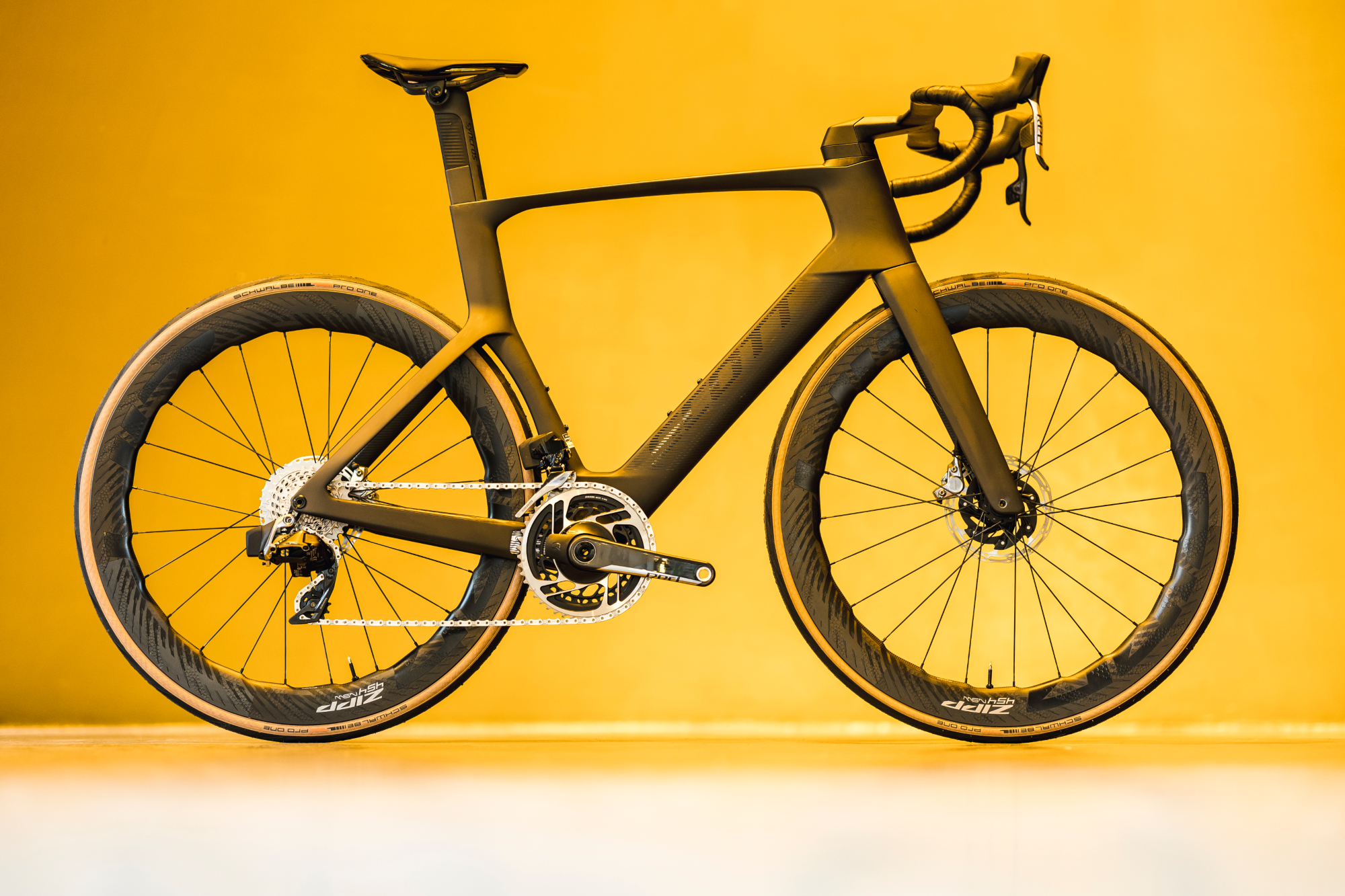
- Frame and fork: Foil RC Disc HMX SL, Foil Disc HMX SL
- Handlebars: Syncros Creston iC SL Aero
- Groupset: SRAM Red eTap AXS with power meter
- Gearing: 48/35T chainrings, 10-33T cassette
- Wheels: Zipp 454 NSW Carbon Tubeless Disc Brake
- Tyres: Schwalbe Pro One Microskin - 25mm front, 28mm rear
- Saddle: Syncros Belcarra V-Concept 1.0
Foil RC Pro
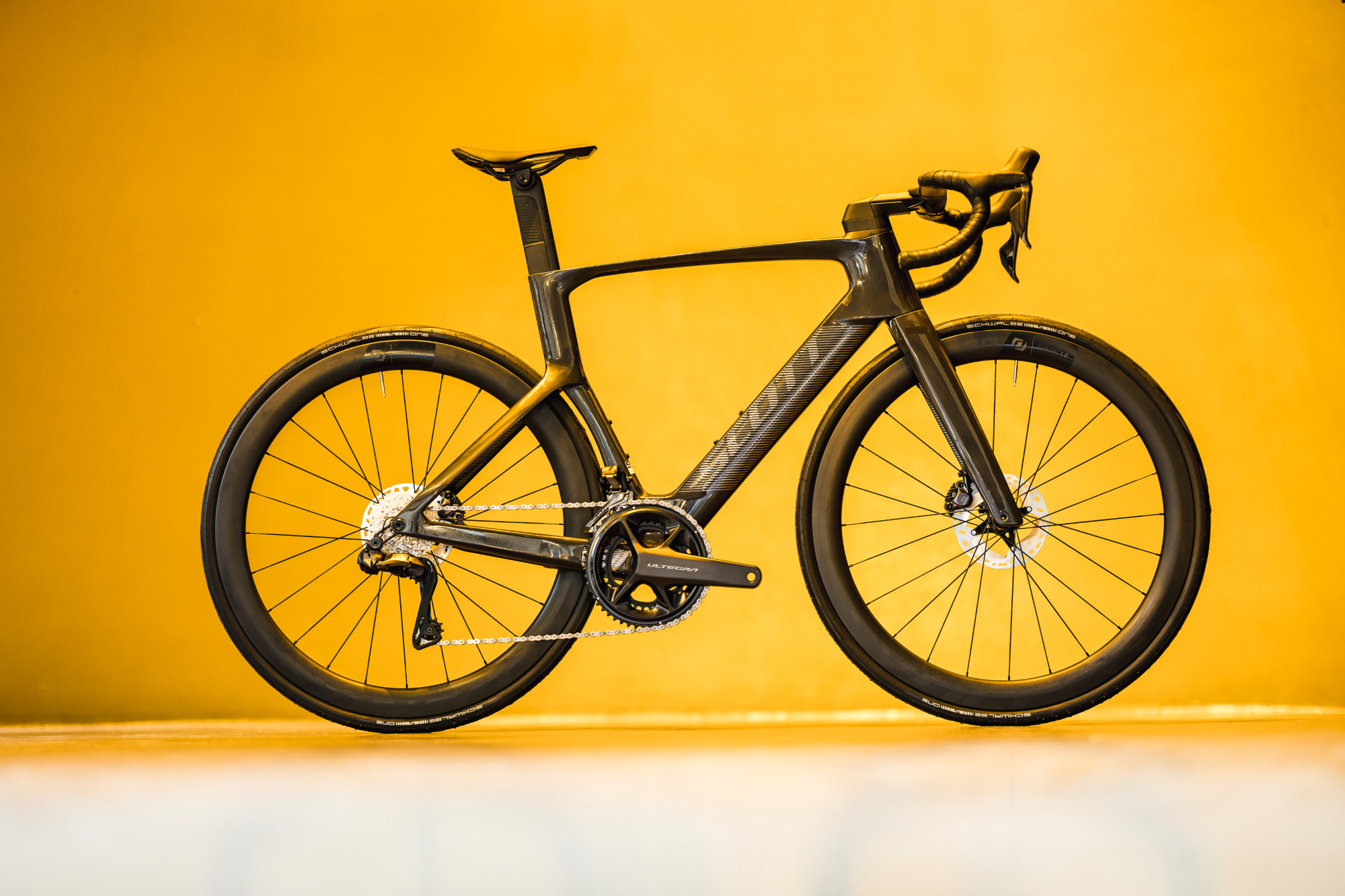
- Frame and fork: Foil RC Disc HMX, Foil Disc HMX
- Handlebars: Syncros Creston iC SL Aero
- Groupset: Shimano Dura-Ace Di2
- Gearing: 52/36T chainrings, 11-30T cassette
- Wheels: Shimano C50
- Tyres: Vittoria Corsa Cotton Tubeless - 26mm front, 28mm rear
- Saddle: Syncros Belcarra V-Concept 1.0
Foil RC 10
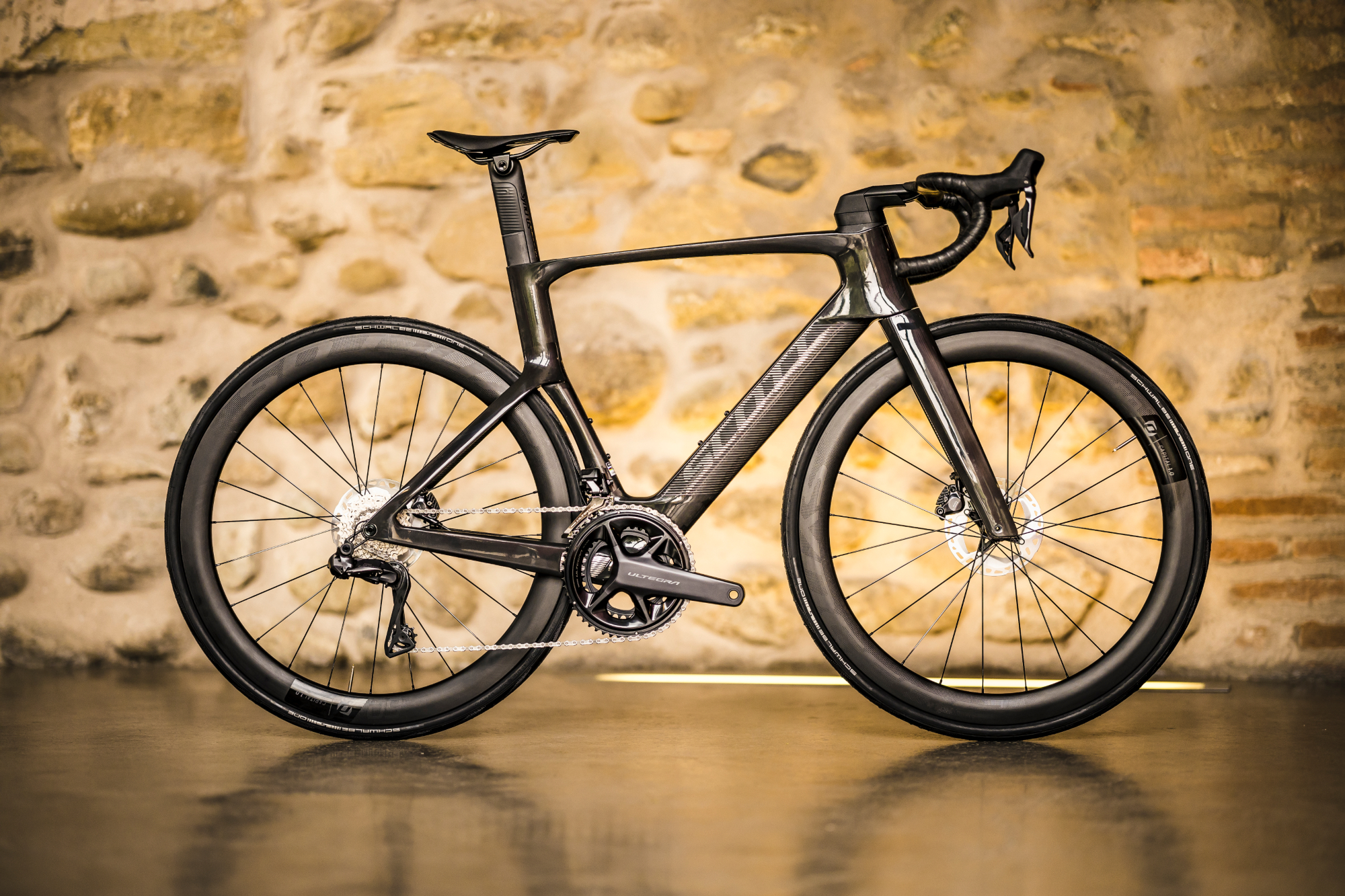
- Frame and fork: Foil RC Disc HMX, Foil Disc HMX
- Handlebars: Syncros Creston 1.0 Aero
- Stem: Syncros RR 1.5 Aero
- Groupset: Shimano Ultegra Di2
- Gearing: 52/36T chainrings, 11-30T cassette
- Wheels: Syncros Capital 1.0 50 Disc
- Tyres: Schwalbe One Race-Guard - 25mm front, 28mm rear
- Saddle: Syncros Belcarra V-Concept 2.0
Foil RC 20
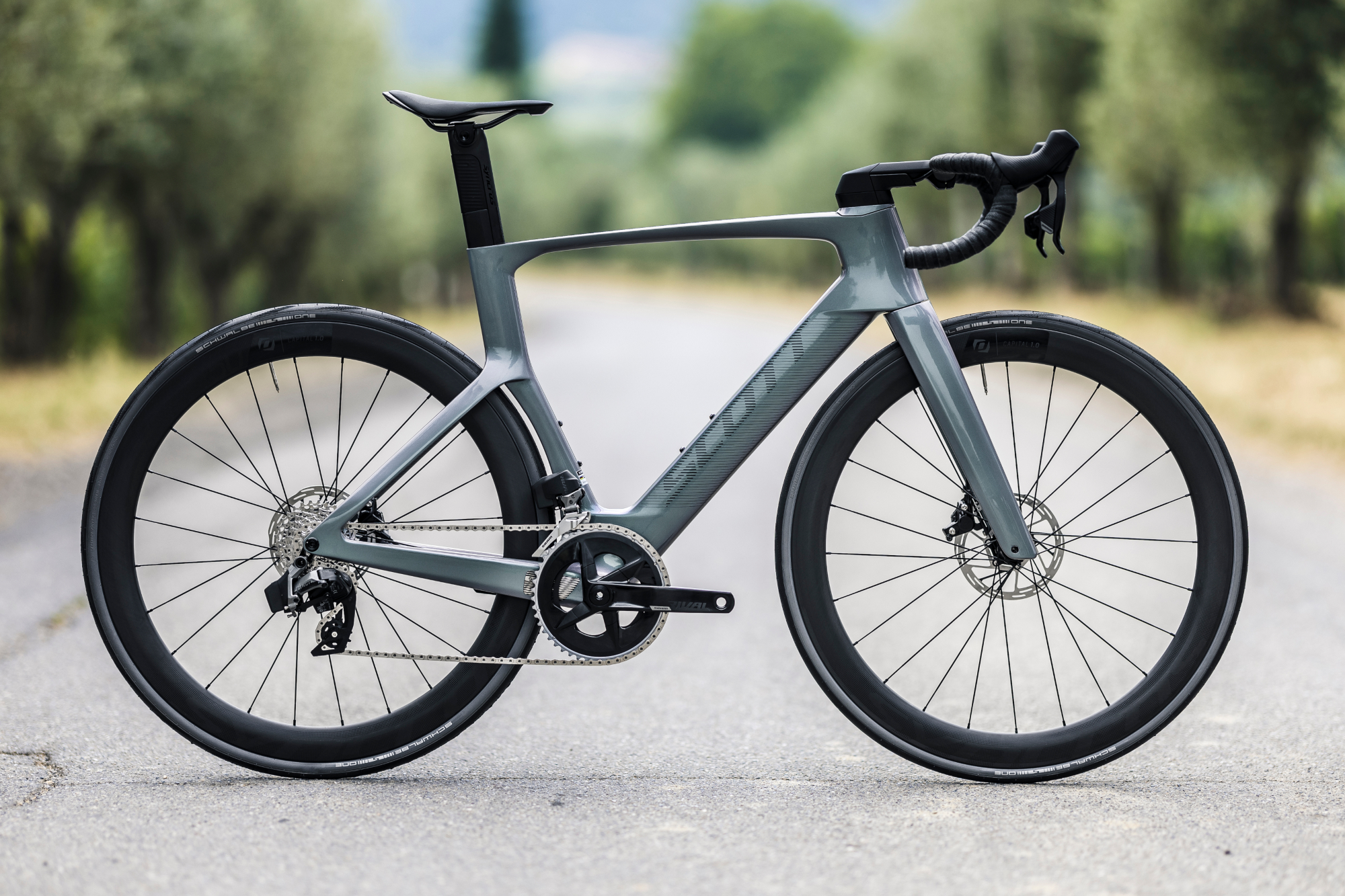
- Frame and fork: Foil RC Disc HMX, Foil Disc HMX
- Handlebars: Syncros Creston 2.0 Aero
- Stem: Syncros RR 1.5 Aero
- Groupset: SRAM Rival eTap AXS
- Gearing: 48/35T chainrings, 10-30T cassette
- Wheels: Syncros Capital 1.0 50 Disc
- Tyres: Schwalbe One Race-Guard - 25mm front, 28mm rear
- Saddle: Syncros Belcarra V-Concept 2.0
I had the chance to ride the top-end Foil Ultimate RC model in and around Lake Iseo in Italy: skirting the rougher roads of the bustling neighbouring towns, up a magnificent switchback climb overlooking the lake, and on back to back laps around the twisty and pristine surface of the Porsche racing course - so check out my first ride review on Scott’s updated Foil RC Ultimate over here.

Thank you for reading 20 articles this month* Join now for unlimited access
Enjoy your first month for just £1 / $1 / €1
*Read 5 free articles per month without a subscription

Join now for unlimited access
Try first month for just £1 / $1 / €1

I’ve been hooked on bikes ever since the age of 12 and my first lap of the Hillingdon Cycle Circuit in the bright yellow kit of the Hillingdon Slipstreamers. For a time, my cycling life centred around racing road and track.
But that’s since broadened to include multiday two-wheeled, one-sleeping-bag adventures over whatever terrain I happen to meet - with a two-week bikepacking trip from Budapest into the mountains of Slovakia being just the latest.
I still enjoy lining up on a start line, though, racing the British Gravel Championships and finding myself on the podium at the enduro-style gravel event, Gritfest in 2022.
Height: 177cm
Weight: 60–63kg
-
 Man hands himself in to Belgian police after throwing full water bottle at Mathieu van der Poel during Paris-Roubaix
Man hands himself in to Belgian police after throwing full water bottle at Mathieu van der Poel during Paris-Roubaix30-year-old was on Templeuve-en-Pévèle cobbled sector when television pictures showed the bottle hitting him in the face
By Tom Thewlis Published
-
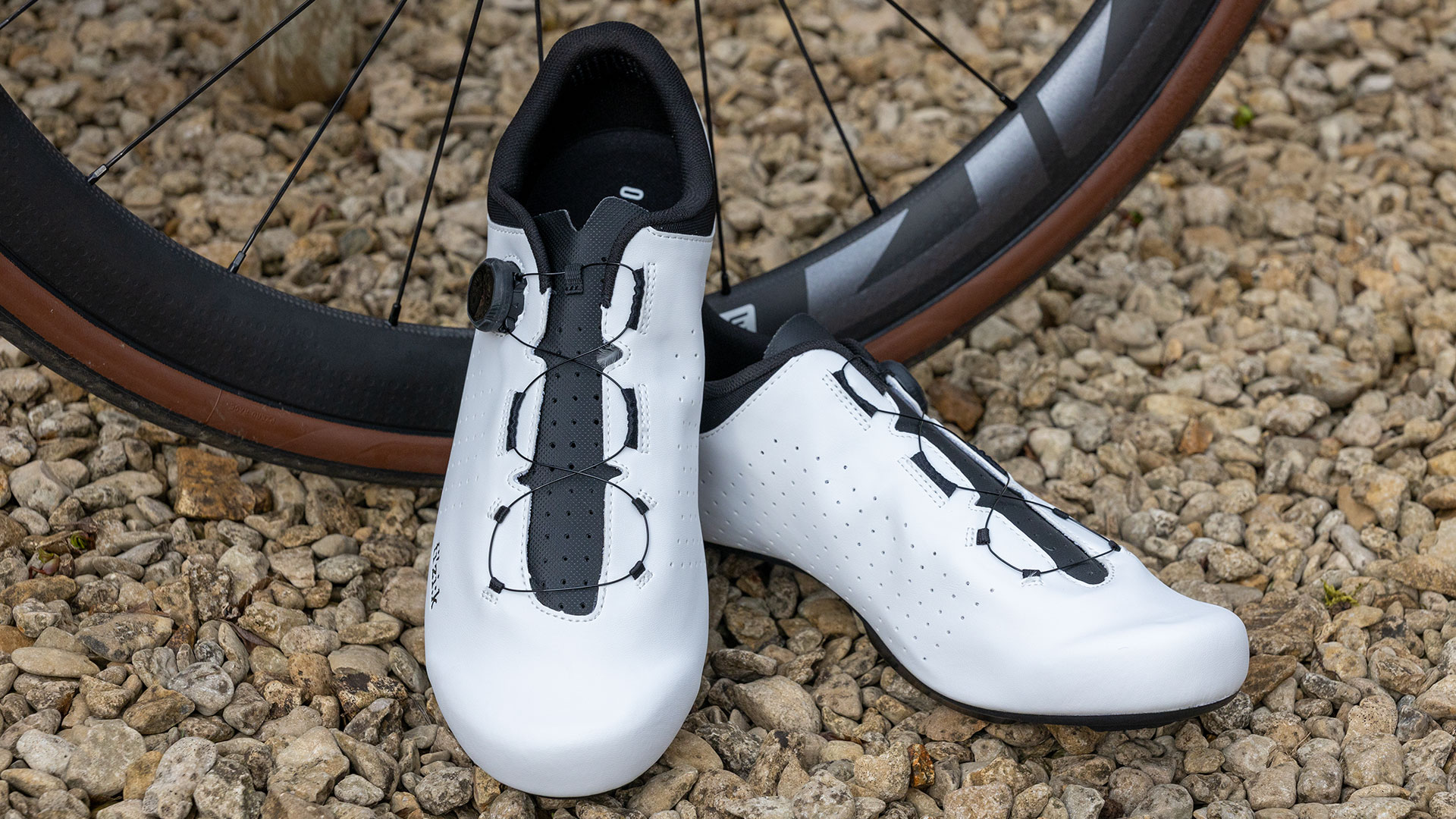 Fizik Vento Omna Wide shoe review: Yeti sneakers for those pedalling on a budget
Fizik Vento Omna Wide shoe review: Yeti sneakers for those pedalling on a budgetBroadly recommended for those of us with flipper feet
By Simon Fellows Published